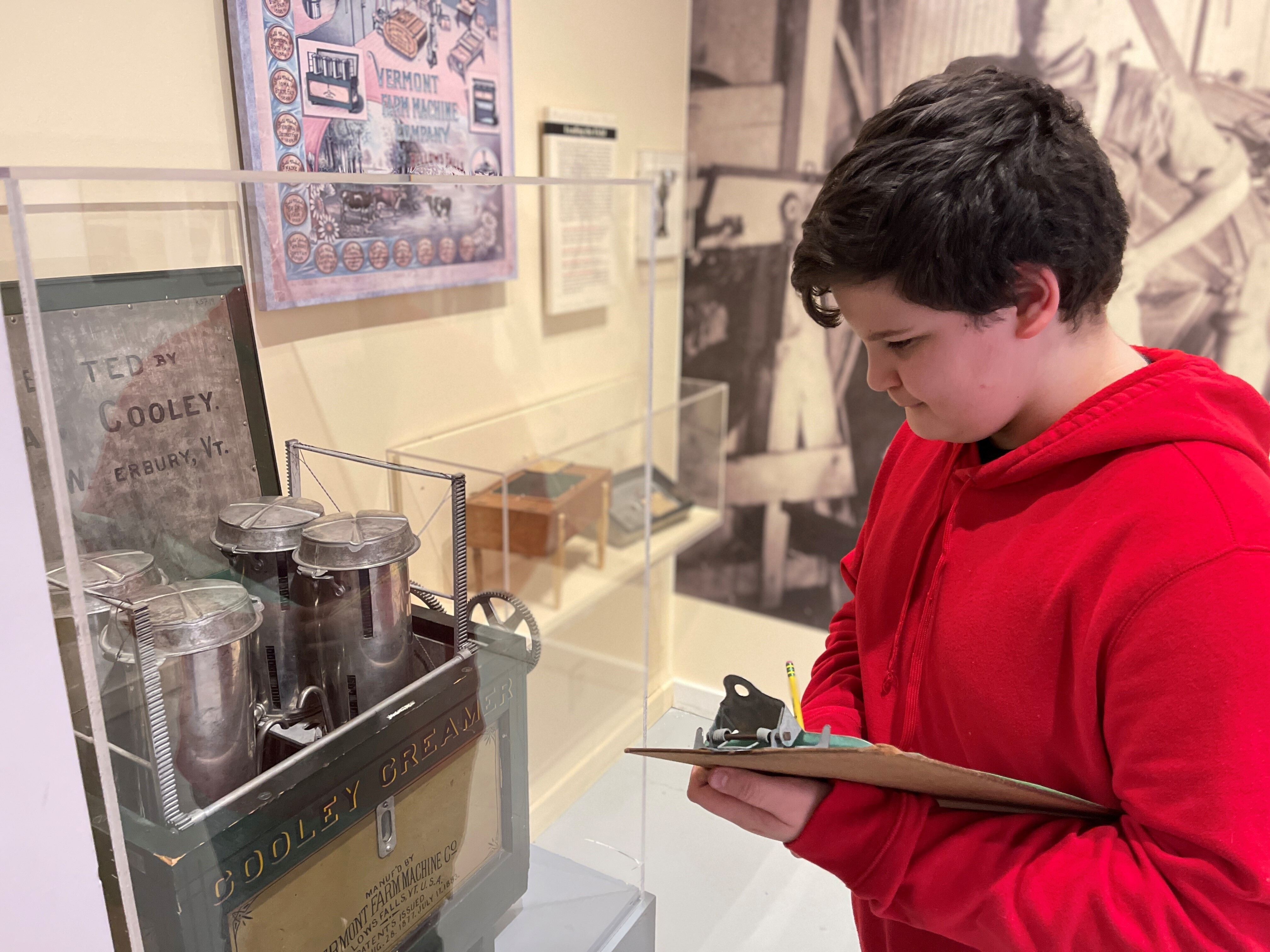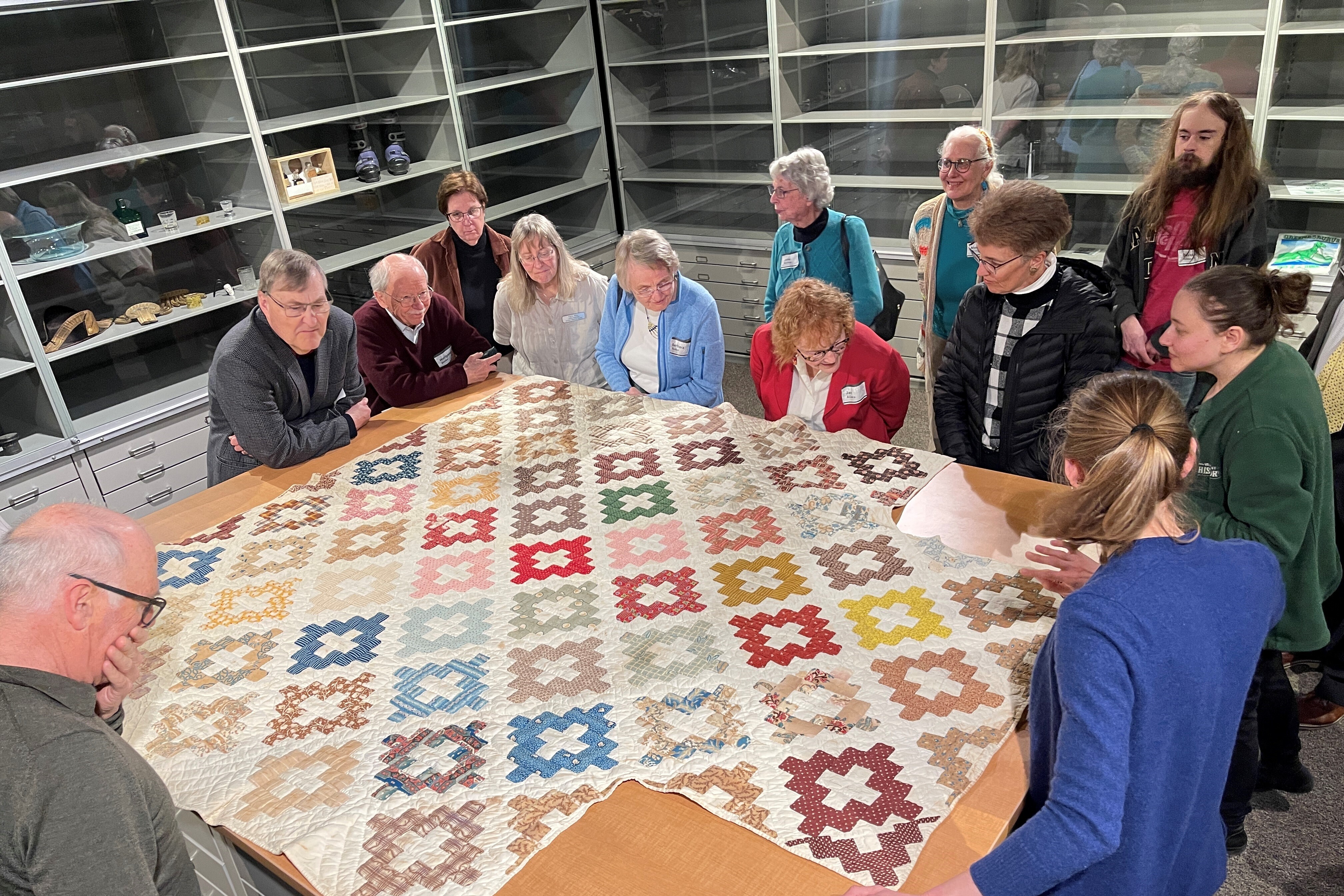Touching History

What looks like play to many is an introduction to the history of communication and a learning opportunity
One notable section of the Vermont History Museum’s Freedom & Unity exhibit is a railroad post office. It’s an interactive environment that features mailboxes stuffed with scans of actual letters written by Vermonters for students to read. After reading these letters, students and visitors are invited to write their own. While there, they can also use a telegraph machine to send their own messages via Morse Code.
What looks like play to many is an introduction to the history of communication and is a learning opportunity. A teacher may inquire: “If you had to urgently deliver a message, would you send it via regular mail or telegram?” and prompt students to think about how the telegram has influenced communication today. Immersive learning environments, where students interact with three dimensional objects, help move learners from abstract concepts to deeper, concrete understandings of the past.
Objects stoke curiosity in a viewer. We are surrounded by objects everywhere we go, and many of us have assembled personal collections that are near and dear to our hearts. Whether it’s a cherished photograph of a beloved person, a postcard from a memorable vacation, or an iridescent pebble scooped up on a walk, objects remind us of specific moments in our own storied life. When viewed as a larger collection, a learner can draw connections between the individual stories they tell and the bigger picture of which they are a part.
The Vermont Historical Society has been collecting and preserving items related to Vermont’s story since 1838, and currently holds an estimated 30,000 items in its object collection. It’s ripe for educational programming because these items can be used as powerful teaching tools. Each conveys understanding and meaning, providing a glimpse into countless past experiences, values, and identities.
While learning often occurs within a classroom, it’s an activity that is not bound to schools alone and museums are fantastic venues for stoking inquisitiveness. Arranged in chronological order, the Freedom & Unity exhibit takes students through Vermont’s history across a wide range of topics through which they can witness how events, technologies, and societal changes unfolded.
First-hand encounters with primary source materials and objects offer learners the opportunity to interact with history in a tangible way. By exposing learners to these objects, a door is opened to thoughtful conversation. This is true even when faced with difficult histories, such as coming face-to-face with a mask worn by a Vermont Klu Klux Klan member or a club that was used during a labor strike. In these instances, viewers are invited to grapple with the complex ideas of power and struggle and are encouraged to draw connections in a wider context.
By exploring artifacts, documents, and photographs, learners bear witness to actual remnants of history. VHS’s Hands-On History programs were designed for educators who want to provide in-depth exploration into Vermont history with their students. All eight, 45-minute programs prompt students to interact with primary and secondary sources. In the You Be the Historian program, students act as researchers, curators, and archaeologists to discover details about the Wheeler family who lived in Calais in the 1880s. While rotating through stations, students develop their ability to evaluate, interpret, and draw conclusions using historical evidence.
The field of education is always evolving, and in response, educators make every effort to update and reinvent their educational materials to meet these changing needs. At the same time, curators and collections managers have evolved their practices to continue to find new, better ways of preserving and presenting the objects that make up a state’s heritage. Together, educators and collections specialists join forces to show the value of preserving historical artifacts and in turn, learners begin to grasp the importance of preserving their own cultural identity and heritage for future generations.
The Vermont Historical Society is a collector and keeper of Vermont stories. Just as people experience personal growth through learning, it’s important that VHS continues to evolve its own collection practices to preserve and present a more comprehensive history. A willingness to adapt shows a commitment to the pursuit of an inclusive history. We hope that the use of collections through creative educational programming will inspire a new generation to enjoy Vermont history as much as we do.
This article originally ran in the Spring 2024 issue of History Connections. To stay up to date with the Vermont Historical Society, sign up as a member, subscribe to our newsletter, or follow us on social media.
